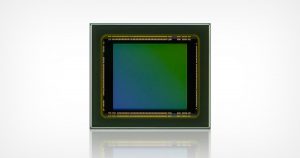A couple of weeks ago, one of the participants at my Las Vegas workshop asked me about this, and when it did, it kind of made me do a double-take because it’s been so long since I’ve been asked this question. Fewer and fewer of my colleagues are still converting to DNG, so it really tossed me for a loop. Today, we’re going to look at why I don’t do it, but I’m also going to share someone else’s reasons as well.
I’m going to try and keep this as short and sweet as possible, but it’s important to note up front — I’m not telling you-you shouldn’t be converting your RAW files to the DNG format — I’m just telling you I’m not, and I stopped doing it a while back. Here’s why:
Converting to DNG in Lightroom takes time, I don’t get much benefit back from taking that extra time and so for me and my workflow, it just doesn’t make sense.
None of the big three camera makers adopted the DNG format. Only a handful of smaller companies did, so it never really caught on like it would have if they had all gotten on board. I don’t share files with other users where I need to keep my RAW edits intact when sharing the original RAW file with another user (see this article), so combining the XMP file and the RAW original into one single file isn’t a benefit to me (I don’t work with XMP files that often to begin with). Plus, if I did convert to DNG for that reason, it takes longer to re-save the entire DNG file over again each time you make a change than it is to just save changes to an XMP text file, which happens very quickly in comparison. It’s that wasting time thing again.
Am I concerned that one day I won’t be able to open my existing native RAW files created by the camera companies? Not at all. At the time Adobe created the DNG spec, it was probably a legit concern, but these days a 12-year-old could probably write a RAW converter during study hall, so I don’t sweat it.
I know there are still a handful of other pros of using DNG, but there are just as many cons. Maybe more. I’m happy with where I’m at — working faster, not wasting time on import converting to DNG, and I still sleep well at night. Something to think about, anyway.
Hope you have a great weekend, and we’ll catch you next week
-Scott
NOTE: A few years back, one of my readers, Reid J. Thaler, did a really informative write up on why he doesn’t use DNG, and he posted it as a comment here on the blog. Here’s what he wrote:
FROM REID J. THALER:
I teach Lightroom, and a few years ago, I put together my own David Letterman style of “The Top Ten Reasons Not to Convert Your Images to DNG Files.”
Precludes you from using OEM software You will never be able to use your camera manufacture’s software again. Ever. Features that are specific to certain cameras (like Nikon’s Active D-Lighting and Picture Control) are not supported in the DNG format. Do you really think that Adobe knows everything that’s in every proprietary RAW file format it supports?
Backing up images will take longer In Lightroom, many of the changes you make can be stored in small XMP sidecar files that accompany raw files, and are only a few kilobytes. When you convert to DNG, changes are made directly to the file, so when you back up your images (hopefully daily) the whole file, typically 20 MB or more, needs to be backed up instead of just the small XMP sidecar files.
Metadata can’t be read by other software XMP data, including keywords, stars, and metadata that you may have changed in Lightroom is not available if you want to use another program that can read XMP sidecar files but not DNG files.
Longer downloading times from your memory card If you convert images to DNG upon importing to Lightroom, processing times increase since Lightroom must import and convert all the files to DNG.
File sizes One argument is that DNG file sizes are more efficient and can be up to 20% smaller. In 1956, the first IBM Model 350 hard drive weighed over a ton, cost $329,928 (in 2014 dollars) annually to lease, and stored 3.75 MB of data. It would have taken over 20 of them to hold a single Nikon D810 (36 MP) 14-bit RAW image file. Today, a 3 TB hard drive (formatted) holds the equivalent of 725,333 of the Model 350 hard drive and costs $100. The equivalent storage capacity, using the IBM Model 350 hard drive, would cost $14.9 billion to lease the same capacity (not to mention the 11.6 million square feet to store them, or the cost of electricity to run them. I’m not concerned about the size of native RAW files!
Load times DNG files supposedly load faster in the Develop module. With faster processors and Smart Previews, RAW files load very quickly in the Develop module even from an external drive USB 3.0 drive.
Ability to read RAW file in the future. One of the other main arguments in favor of converting to DNG files is that if a camera manufacturer stops producing software that can read their RAW files, then their RAW files would be unreadable. I don’t think Nikon, Canon, or Sony are going away anytime soon, and even if they were, you could use their software to read their files. Worst case, you could always convert them to DNG.
DNG is not an industry standard; it’s Adobe’s standard. As much as Adobe would love the DNG format to become the industry standard, it’s not. It’s Adobe’s standard. While a few camera manufacturers produce cameras that shoot DNG files as their native RAW files, most do not. DNG requires a lifelong allegiance to Adobe.
Camera brand not easily identified. Converting all your files to DNG makes it harder to quickly identify the camera manufacturer when looking at the file name since the suffix will be a generic DNG and not one associated with your camera.
No obvious benefit. For all the reasons touting the DNG format, perhaps the biggest reason not to convert is that there is no obvious benefit. DNG files don’t contain more information (maybe less), are negligibly smaller, don’t load appreciably faster, take longer to download because the must be converted, and ties you to Adobe forever! They simply are, understandably, a greater benefit to Adobe than you, and have not been embraced as a standard format.
Thank you, Reid. You said it better than I could.
Have a great weekend, everybody!
-Scott
P.S. Our KelbyOne Black Friday/Cyber Monday “Best deal ever” is kicking off now, and I think it’s the best deal we’ve ever offered on a KelbyOne Pro membership. It includes my full-day Lightroom Live! Seminar, filmed earlier this year in front of a live audience – it’s five in-depth Lightroom classes. We started at 10 am and ran until after 5 pm, so it’s a lot of training. (We did take a break every hour, and we broke for lunch, too). Anyway, you get my full-day seminar and so much more. It’s a pretty insane deal. Grab it right now at kelbyone.com
The post Why I Don’t Convert My Raw Images To DNG appeared first on Lightroom Killer Tips.


